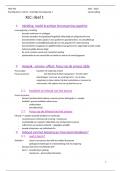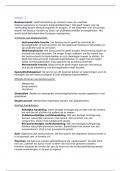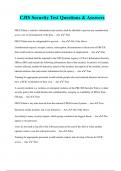Samenvatting
Summary Essay Plan - "Outline and evaluate the operant conditioning/classical conditioning model of addiction"
- Vak
- Instelling
Psychology essay plan tailored to suit the AQA A-level Specification A syllabus. The essay plans are colour coded to make revision slightly more interesting. The essay plans are broken down into A01 and A02 criteria. The A02 criteria has been broken down into research, approach, issue/debate. R...
[Meer zien]








